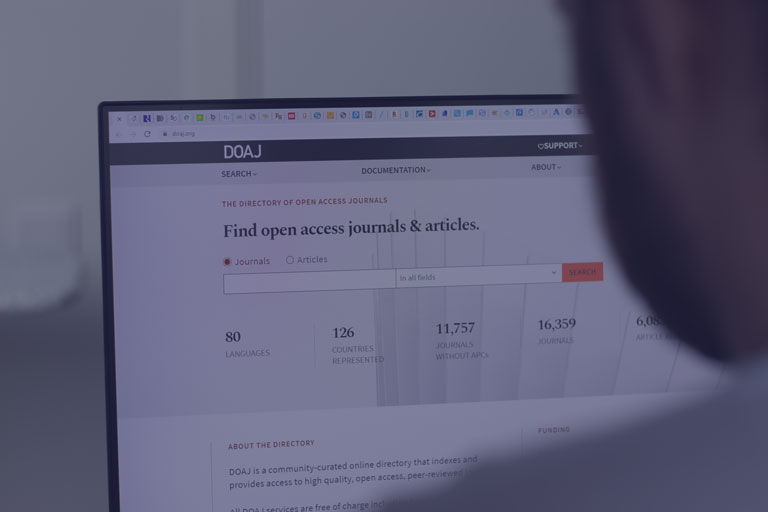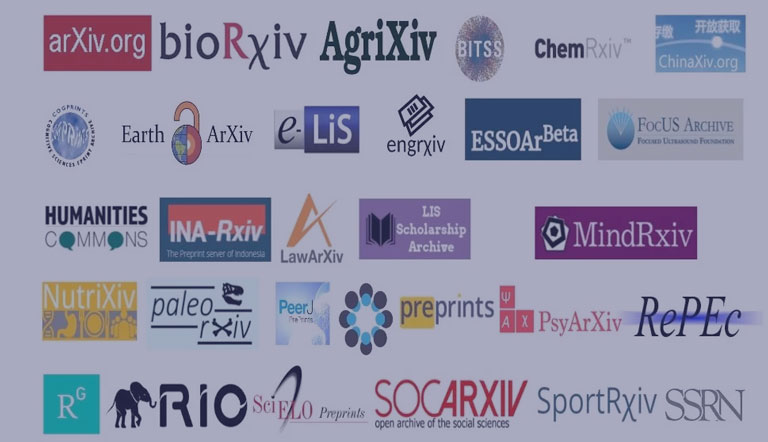The COVID-19 pandemic significantly influenced scientific publishing and the output of research institutions and laboratories. Lockdowns and safety measures led to the closure or restricted operations of research facilities, disrupting ongoing experiments, clinical trials, and data collection processes. This resulted in delays and setbacks across various scientific disciplines. Additionally, the prioritization of COVID-19-related research led to a shift in focus, with many laboratories reallocating resources and personnel to contribute to urgent pandemic response efforts.
Also Read:
AI Tools for Science Writing: Why, How, When, and When Not To

Scientific Publishing & Research Disrupted by Pandemic Challenges
The science publication industry, the conduit for disseminating scientific knowledge, experienced its own set of challenges. The closure of physical workspaces prompted a rapid transition to remote work for editors, reviewers, and publishing professionals. This adjustment impacted the efficiency of editorial processes, potentially causing delays in manuscript handling and peer review. Moreover, the surge in submissions related to COVID-19 strained the already burdened peer-review system, leading to an increased workload for reviewers and editors, who pushed aside non-COVID-19-related research.
Continuity and Resilience Enabled by Digital Transformation
Despite the challenges, the science publication industry demonstrated resilience and adaptability. The adoption of digital technologies, virtual conferences, and electronic workflows played a crucial role in maintaining continuity. Publishers and journals, recognizing the importance of the rapid dissemination of COVID-19 research, expedited the review and publication processes for pandemic-related studies by utilizing digital tools and platforms as well as remote work technologies. This responsiveness showcased the industry’s ability to adapt to evolving circumstances while upholding rigorous standards of scientific communication.
Long-Term Changes Propelling the Science Publication Industry into a New Era
The pandemic also led to some long-term changes in scientific publishing. These changes, such as the increased adoption of digital tools and platforms, the emphasis on open access, and the focus on collaborative research, are propelling the science publication industry into a new era of openness, collaboration, and adaptability.
- Increased adoption of digital tools and platforms: The pandemic forced the science publication industry to embrace digital technologies at an accelerated pace. This shift led to a more efficient and streamlined workflow, with electronic manuscript submission, peer review, and publication becoming the norm.
- Emphasis on open access: The pandemic also highlighted the importance of open access publishing. Open access makes scientific research more freely available, which promotes equity and accessibility, and enables researchers from all over the world to contribute to and benefit from scientific knowledge.
- Focus on collaborative research: The pandemic fostered a greater sense of collaboration within the scientific community. Researchers from different disciplines have come together to address the challenges posed by the pandemic. This collaborative spirit also extended to the science publication industry, with publishers and journals working together to promote open access and share resources.
Overall, the COVID-19 pandemic had a significant impact on the science publication industry. The challenges posed by the pandemic forced the industry to adapt and innovate, leading to some long-term changes that are transforming it into a more open, collaborative, and adaptable entity.

Accelerated Adoption of Open Access
The COVID-19 pandemic accelerated the adoption of open access publishing in the post-pandemic scientific publication landscape. Open-access articles reached a record high in 2020, accounting for a majority of the total scholarly output across various disciplines.
See: Open Access Statistics.
Publishing Giants are Embracing Open Access
Publishing giants, including Elsevier, Springer Nature, and Wiley, reported an upsurge in the demand for open access options during the pandemic. Elsevier observed a 30% increase in the number of authors choosing open access for their COVID-19-related research, and fully 25% of research articles published in 2022 were open access. This surge in demand reflects the immediate need for rapid dissemination of critical information as well as a growing preference for open access publishing as a long-term practice.
Funders and Institutions are Driving Change
Funding agencies and institutions played a pivotal role in driving the adoption of open access during the pandemic. Major research funders, such as the National Institutes of Health (NIH) and the Wellcome Trust, mandated that research supported by their grants be made openly accessible. Compliance with such mandates led to a substantial increase in open access publications across various disciplines.
Open Access Journals are on the Rise
The Directory of Open Access Journals (DOAJ) reported a significant rise in the number of journals and publishers adopting open access models during the pandemic. The DOAJ welcomed an increasing number of publications committed to the principles of open access.
Open Access: A Transformative Shift
The surge in open access publications reflects a fundamental change in the scholarly communication system. It highlights the global recognition of the importance of freely available knowledge and the shift toward a more open, accessible, and collaborative future for more global and accelerated scientific research dissemination.
Caveats for Researchers
While open access has clear advantages, there are caveats for researchers. Article processing charges to cover publication costs can impose a high economic burden and be a barrier to researchers with limited funding. Other concerns with open access include the increase in predatory publishers with low standards and embargo periods or restrictive licensing, limiting immediate access to research and causing confusion with regard to who retains the copyright.
Challenges Ahead
Despite the significant strides made in promoting accessibility and collaboration in research, open access faces challenges related to quality control, funding, and sustainability. Researchers should be aware of these pros and cons and make informed decisions about where to publish their work. It’s essential for the academic community to continue working on addressing these challenges to ensure that open access remains a viable and beneficial publishing model.
SEE ALSO: Our article on Open Access

Digital Transformation
Virtual Conferences: The New Norm
The COVID-19 pandemic accelerated the digital transformation of the scientific publication industry, making virtual conferences the norm. The number of virtual conferences surged exponentially during the pandemic, with a staggering increase of over 300% in 2020 compared with the previous year. This dramatic rise reflects the adaptability of researchers and institutions and the widespread acceptance of virtual platforms as viable alternatives to traditional in-person conferences.
Online Collaboration on the Rise
The pandemic also witnessed a substantial uptick in the adoption of online collaboration tools, such as Zoom, Microsoft Teams, Google Meet, and Slack. These tools experienced a significant surge in usage within the academic and scientific communities, with a more than 150% increase in usage for collaborative endeavors among researchers during the pandemic. This remarkable increase highlights the immediate response to the need for virtual collaboration and suggests a fundamental shift in the way researchers connect and work together.
Electronic Manuscript Workflows Expedite Publication
Major publishing platforms, such as ScholarOne Manuscripts and Editorial Manager, reported a noteworthy increase in the use of electronic workflows for manuscript submission and review processes during the pandemic. In 2020, there was a 40% increase in the submission of manuscripts through online platforms compared with the previous year. This surge streamlined the submission process and contributed to faster peer-review cycles, facilitating quicker dissemination of crucial research findings.
Access Democratized by the Digital Revolution
The digital revolution triggered by the pandemic not only enhanced the efficiency of scientific communication but also profoundly affected the global scientific community. The adoption of virtual tools and platforms democratized access to academic discourse, fostering inclusivity and collaboration. A survey conducted by the Scholarly Publishing and Academic Resources Coalition found that researchers reported a 25% increase in collaboration with international peers during the pandemic, showcasing the interconnected nature of the global scientific community in the digital age.
Paradigm Shift Toward a More Connected Scientific Community
The surge in virtual conferences, increased usage of online collaboration tools, and the adoption of electronic manuscript workflows collectively indicate a post-pandemic paradigm shift toward a more connected, efficient, and inclusive global scientific community.

Greater Emphasis on Data Sharing
The COVID-19 pandemic also highlighted the importance of data sharing in science. Researchers and institutions recognized that the traditional model of data hoarding is incompatible with the demands of the 21st century, and the adoption of open data practices in research publications continues to surge.
Publishers, Journals, and Funders Play a Crucial Role
Major publishers implemented data-sharing policies, requiring authors to make datasets underlying their research publicly accessible. Funding agencies also played a role in promoting data sharing by making it a requirement for grant funding. These policies and initiatives contributed to a growing culture of transparency and collaboration in the scientific community.
Challenges and Considerations for Data Sharing
While the rise of data sharing is a positive development, it also raises several important challenges. One of the biggest concerns is data privacy and ethics. Researchers must carefully consider the privacy risks associated with sharing sensitive data, such as medical or personal information, and ensure that they adhere to ethical guidelines and informed consent.
Another challenge is data security. Sharing data can increase the risk of data breaches and cyberattacks, so researchers and institutions must implement robust security measures.
Data ownership and intellectual property rights can also be a source of contention, especially in multi-institutional projects. It is important to define clear agreements and policies to mitigate these issues.
Other challenges include ensuring the quality and integrity of shared data, achieving data standards and interoperability, preserving data for the long term, and citing and attributing data to the original creators.
Collaborative Efforts to Promote Responsible and Open Data Sharing
Addressing the challenges of data sharing will require a collaborative effort involving researchers, institutions, and policymakers. It is important to establish best practices, standards, and infrastructure that promote responsible and open data sharing in science.

Recognition of Preprints
Preprints as a Dynamic Tool for Rapid Dissemination
The COVID-19 pandemic underscored the value of preprints as a means of rapidly disseminating research findings. Preprints, which are non-peer-reviewed versions of research papers, emerged as a dynamic and timely tool for researchers seeking to share crucial information in an expedited manner.
Platforms like bioRxiv and medRxiv, which host preprints in the life sciences and health sciences, experienced an unprecedented surge in submissions during the pandemic. These platforms collectively hosted over 28,000 COVID-19/SARS-CoV-2-related preprints.
Sustained Growth and Acceptance of Preprints
The recognition of preprints as a legitimate and valuable form of scientific communication persists in 2023. Researchers across diverse disciplines have come to appreciate the benefits of swift dissemination, allowing for real-time engagement and feedback from the global scientific community. A survey conducted by the Centre for Open Science revealed that 80% of researchers who shared preprints during the pandemic received valuable feedback, contributing to the refinement and improvement of their work.
Furthermore, the acceptance of preprints has extended to academic institutions and funding agencies, which recognize the value of early dissemination of research findings. Many funding agencies have adjusted their policies to explicitly support the use of preprints, acknowledging their role in accelerating the pace of scientific discovery.
Enduring Significance of Preprints in the Scientific Communication Landscape
The enduring significance of preprints is reflected in the sustained growth of preprint servers across various disciplines. While the surge in COVID-19-related preprints was substantial, the overall volume of preprints across disciplines continues to increase. This indicates a broader acceptance of preprints as a standard practice for sharing research findings, not confined to crisis scenarios.
The pandemic served as a catalyst for the widespread recognition of preprints as an invaluable tool for rapidly disseminating research findings. The sustained growth in the adoption of preprints, coupled with the positive experiences of researchers and institutions, affirms that preprints have become an integral and enduring component of the scientific communication landscape, contributing to a more open, dynamic, and collaborative research environment.
Disadvantages of Preprints and Ongoing Efforts to Address Them
Some disadvantages to the availability of preprints, however, should be noted. Preprints lack the peer review that validates research quality, which can lead to the dissemination of unverified or low-quality findings. Misinterpretation by readers is also a risk. Researchers may worry about credibility and intellectual property concerns, and the potential for “scooping” (others publishing similar work first). Additionally, preprints might not be accessible to all researchers and raise concerns about data validity and misuse.
Nevertheless, preprints remain a valuable tool for sharing early research and ideas. Efforts are ongoing to address the challenges of preprints and maintain the integrity of scientific communication. These efforts include:
- Developing guidelines and best practices for preprint sharing
- Implementing quality control measures on preprint servers
- Educating researchers and the public about preprints
- Promoting the responsible use of preprints
By addressing these challenges, the scientific community can ensure that preprints continue to serve as a valuable tool for accelerating the pace of scientific discovery and promoting open and collaborative research.

Increased Collaboration
Virtual Collaboration Tools Bridge the Gap
Travel restrictions imposed in response to the COVID-19 pandemic forced a paradigm shift in collaborative practices within the scientific community. Virtual collaboration tools such as Zoom, Microsoft Teams, and collaborative document editing tools emerged as indispensable bridges, connecting researchers across continents and transcending the constraints of physical proximity. This shift in collaborative dynamics left a profound and lasting impact on the internationalization of research efforts.
Global Collaboration Enriches Research
The newfound ability to collaborate globally resulted in numerous tangible benefits. Researchers from diverse cultural and academic backgrounds can now collaborate seamlessly, contributing to the enrichment of research projects with a broad spectrum of perspectives. A survey conducted by the International Association of Universities found that 85% of academic leaders recognized an increase in international collaboration during the pandemic that persists today. This increased collaboration fosters a more inclusive and interconnected global research community, enhancing the depth and breadth of scientific inquiry.
Virtual Conferences Expand Access
Virtual conferences, another byproduct of the paradigm shift in collaborative practices, increased academic participation. Researchers from developing countries or those facing financial constraints can now participate in conferences without the burden of travel expenses. The adoption of virtual conferences expands access to academic discourse, making it more inclusive and accessible.
The Future of Global Research Collaboration
The transformative shift towards virtual collaboration not only addresses the immediate challenges posed by travel restrictions but also contributes to building a more inclusive, diverse, and interconnected global research landscape.

Continued Challenges in Peer Review
While the peer-review process has improved over time, challenges remain. Delays and reviewer fatigue are 2 areas of particular concern, posing hurdles for researchers and publishers alike. These challenges were especially pronounced during the COVID-19 pandemic, as the surge in manuscript submissions and the demand for rigorous review stretched the limits of the traditional peer-review system.
The Impact of the Pandemic
Major publishers reported unprecedented spikes in manuscript submissions during the early months of the pandemic. For example, Springer Nature experienced a 25% increase in submissions. This surge can be attributed to both the intensified focus on COVID-19 research and the broader trend of increased scholarly output across disciplines during periods of remote work and lockdowns.
The strain on the peer-review system led to delays in the publication process. According to a survey conducted by the Publishing Research Consortium, 80% of authors reported longer review times during the pandemic, with the average review duration increasing by approximately 30%. These delays not only affect the speed of scientific communication but also impact researchers’ ability to disseminate and build upon their work.
Reviewer Fatigue
Reviewer fatigue also emerged as a significant concern, with the increasing workload posing challenges to the sustainability of the peer-review system. The average number of reviews per reviewer increased during the pandemic, exacerbating existing issues of reviewer burnout. The need for a diverse pool of qualified reviewers is essential for maintaining the quality and integrity of the peer-review process.
Toward a More Sustainable and Inclusive Peer-Review System
Addressing the challenges in peer review necessitates ongoing innovation. Initiatives such as transparent peer review, where reviewer comments and identities are disclosed, have gained traction. Journals experimenting with open peer review models reported positive outcomes, including increased accountability and improved review quality. Artificial intelligence tools are also being explored to assist with initial manuscript assessments, helping to streamline the review process and alleviate some of the burden on human reviewers. The need for ongoing innovation is paramount to ensure the integrity and effectiveness of peer review, thereby supporting a robust and efficient system for scholarly evaluation and publication.

Financial Pressures
Economic Fallout of the Pandemic
The economic fallout of the COVID-19 pandemic continues to have a significant impact on the scientific publication industry, affecting both researchers and publishers. Publishers faced financial challenges due to disruptions in workflows, delayed projects, and decreased institutional budgets. This has led to a reevaluation of business models, particularly for those heavily reliant on subscription revenues.
Institutional and Library Reassessment
Institutions and libraries, important stakeholders in the scientific publication ecosystem, have also begun reassessing their subscription models in response to the financial strain. The traditional subscription-based access to scientific journals has faced scrutiny as institutions grapple with budget constraints and seek ways to maximize the value of their spending. Libraries and research institutions are exploring alternative approaches, such as transformative agreements and consortium-based purchasing models.
Calls for Reform
The financial pressures triggered by the pandemic also ignited critical discussions about the long-term sustainability and equity of the current scientific publishing models. Calls for increased transparency in publishing costs, fair pricing structures, and a shift towards open-access publishing gained momentum. The pandemic underscored the importance of ensuring that access to scientific knowledge is not hindered by financial barriers, especially during times of global crises when rapid and widespread dissemination of research findings is paramount.
Collaborative Efforts
This period of reflection spurred collaborative efforts between publishers, institutions, and funding bodies to explore innovative solutions for the evolving landscape. Initiatives supporting open-access models, such as Plan S (which states that beginning in 2021, scientific publications that result from research funded by public grants must be published in compliant Open Access journals or platforms), have gained traction, aiming to make research publications openly accessible to the public and encouraging publishers to adapt their business models accordingly.
Moving Forward
The challenges faced by publishers, coupled with the financial considerations of institutions and libraries, catalyzed conversations about sustainability, equity, and the future direction of scholarly communication. As stakeholders collaborate to navigate these challenges, the hope is to foster a publishing ecosystem that is both resilient and aligned with the principles of openness and accessibility in scientific knowledge dissemination.

Reevaluation of Research Priorities
The COVID-19 pandemic acted as a catalyst for a profound reevaluation of research priorities within the scientific community, prompting a shift in focus toward addressing pressing societal challenges. The stark reality of a global health crisis underscored the importance of prioritizing areas such as public health, infectious diseases, and global preparedness. This shift in focus is indicative of a broader recognition that scientific endeavors should not only contribute to academic knowledge but also play a pivotal role in addressing real-world problems that impact communities on a global scale.
Increased Funding and Collaborative Efforts
The intensified attention to public health research manifested in increased funding, collaborative efforts, and the establishment of research initiatives dedicated to understanding and mitigating the impact of infectious diseases. Funding agencies, governments, and philanthropic organizations directed resources toward research projects that aim to enhance our understanding of infectious diseases, improve diagnostics, develop therapeutics, and bolster global preparedness for future health crises.
Reshaping Funding Landscapes
The reevaluation of research priorities has the potential to reshape funding landscapes, guiding resources toward areas that are not only academically significant but also socially relevant and impactful. As the scientific community grapples with the lessons learned from the pandemic, there is increasing emphasis on interdisciplinary research that spans the traditional boundaries of scientific disciplines. Collaborative efforts between researchers from diverse fields are becoming more prevalent, fostering a holistic approach to addressing complex challenges.
Addressing Societal Vulnerabilities
Moreover, the awareness of societal vulnerabilities exposed by the pandemic led to a broader consideration of factors such as social determinants of health, healthcare infrastructure, and equitable access to medical interventions. This holistic perspective is driving research initiatives that aim not only to understand the biologic aspects of diseases but also to address the broader socio-economic and systemic factors that contribute to health disparities.
Toward a More Socially Responsible and Impactful Scientific Research Landscape
The ongoing reevaluation of research priorities signifies a commitment to ensuring that scientific endeavors have a meaningful and positive impact on society. As funding priorities continue to evolve, there is a growing recognition that research should be aligned with the needs and challenges of the communities it seeks to serve. This shift has the potential to foster a more socially responsible and impactful scientific research landscape, where the outcomes of research contribute directly to the well-being and resilience of global society.
Conclusion
In conclusion, the enduring effects of the COVID-19 pandemic propelled the science publication industry into a new era marked by openness, collaboration, and adaptability. As these transformative changes evolve, the industry is poised to emerge stronger, more connected, and better equipped to meet the needs of the global scientific community. The lessons learned during the global COVID-19 pandemic will undoubtedly shape the future of scientific communication for years to come.




